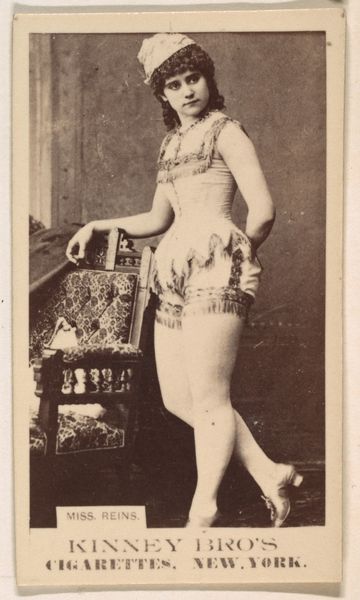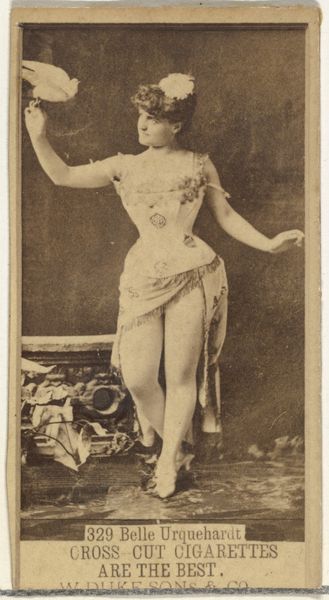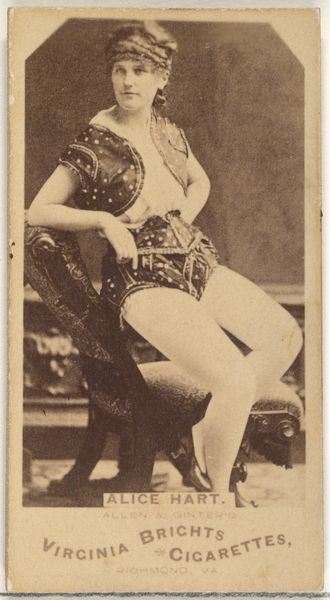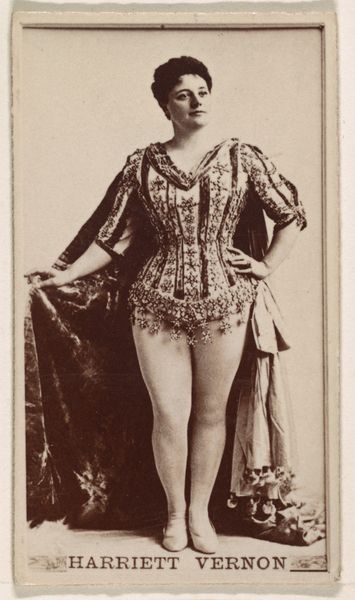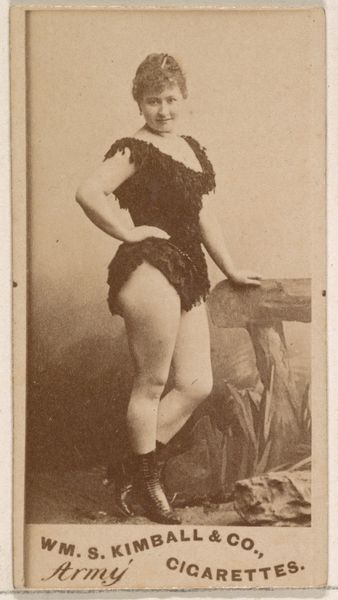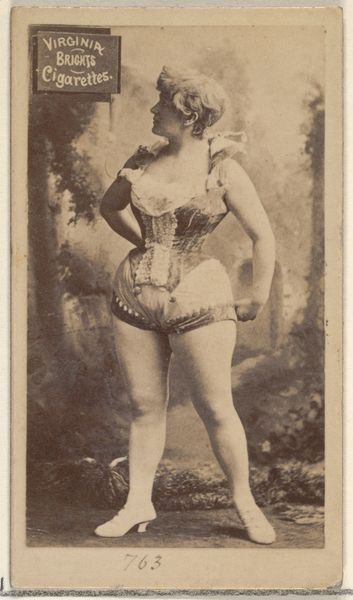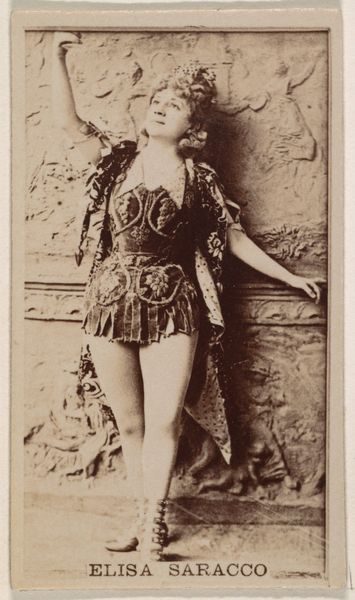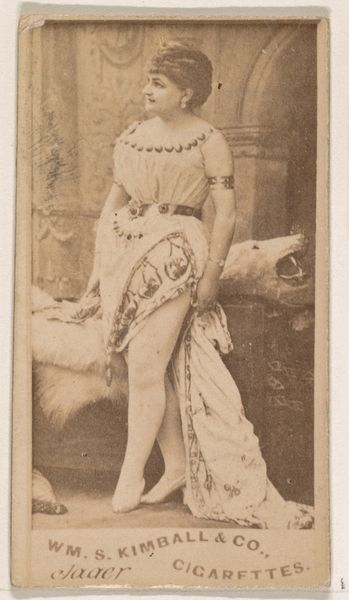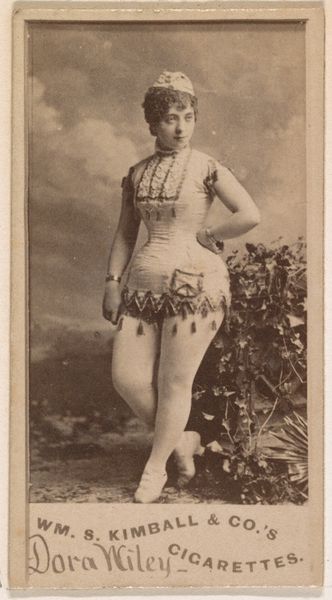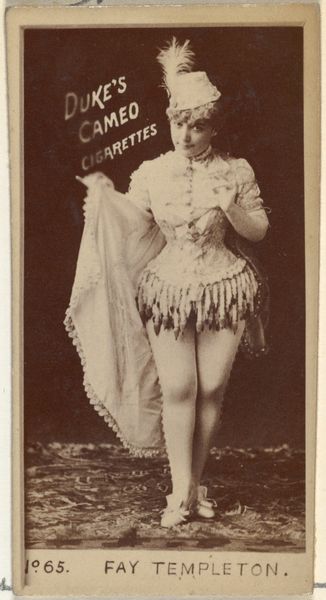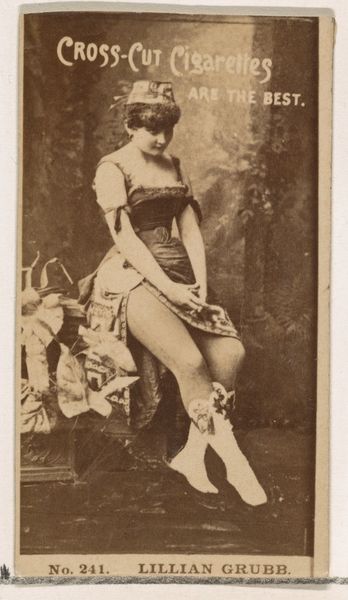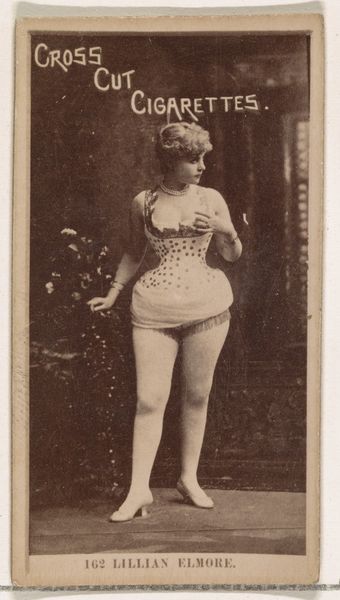
Card Number 610, Lillian Baldwin, from the Actors and Actresses series (N145-3) issued by Duke Sons & Co. to promote Cross Cut Cigarettes 1880s
0:00
0:00
print, photography
#
portrait
# print
#
old engraving style
#
photography
#
genre-painting
Dimensions: Sheet: 2 11/16 × 1 3/8 in. (6.8 × 3.5 cm)
Copyright: Public Domain
Curator: Here we have a trade card from the 1880s, specifically "Card Number 610, Lillian Baldwin, from the Actors and Actresses series (N145-3)." It was issued by W. Duke, Sons & Co. to promote their Cross Cut Cigarettes. Editor: My first impression is how posed and theatrical it feels, yet somewhat melancholy. The sepia tones contribute to this feeling, but also that it clearly belongs to the tradition of genre paintings. There is almost too much weight, which flattens the whole image despite the light on the face. Curator: Genre is definitely the key. Consider what a "star" signified in those early days of mass media, an archetype promoted to sell, as well as idealize feminine beauty through Lillian's body, costuming, and gaze, each carrying distinct cultural meaning. Notice how her figure echoes classical statuary, simultaneously idealizing her form but also suggesting the transience of her fame. Editor: Right, and to produce these cards, Duke used photo-lithography, enabling mass reproduction and widespread distribution. The industrial scale of tobacco production directly informs the card’s existence; advertising and distribution being entirely crucial to the entire business model. That cigarette card became a unit of exchange of consumerist desire itself. Curator: Precisely! It reveals how consumerism appropriates and re-presents culturally established archetypes to fuel sales. The portrait isn’t simply a likeness, but a loaded signifier acting on our desires, even across generations. It's hard not to view it with suspicion in the post-truth, manipulative visual culture we're immersed in now. Editor: I see it more as a crystallization of complex social forces—the rise of celebrity culture, the expanding reach of industrial capitalism, even the shifting roles and expectations of women. It's not a “simple” advertisement at all. The artist in the factory as much as the one celebrated in museums. The card then became a readily available surface, circulated from factory to consumer, reflecting these rapid transformations in culture and materials of the day. Curator: Absolutely. And understanding how it functions symbolically enhances our appreciation of those transformations and what remains true, across changing meanings. Editor: Exactly. Examining the methods behind such artwork really opens up our view of both the industry and those represented.
Comments
No comments
Be the first to comment and join the conversation on the ultimate creative platform.
